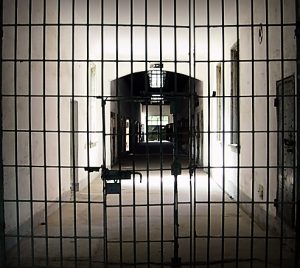Today, many human rights organizations in the U.S and around the world  are raising concerns about the inordinate use of solitary confinement in prisons, and rightly so. In the U.S alone, more than eight thousand people are being held in some form of solitary confinement. Additionally, some U.S states make use of solitary confinement on a routine basis. So what is solitary confinement and why is it so controversial? Here’s some useful information on this crucial topic.
are raising concerns about the inordinate use of solitary confinement in prisons, and rightly so. In the U.S alone, more than eight thousand people are being held in some form of solitary confinement. Additionally, some U.S states make use of solitary confinement on a routine basis. So what is solitary confinement and why is it so controversial? Here’s some useful information on this crucial topic.
Contrary to what most people believe, solitary confinement is not reserved  for terrorists and other dangerous criminals. While you may find a lot of the aforementioned prisoners in America’s ‘Supermax’ prisons, solitary confinement is by no means a punishment meant specifically for them. A short-term isolation, solitary confinement is generally used to punish inmates who breach the disciplinary rules of the prison. In solitary confinement, individuals are confined to isolated cells for almost the entire day and are allowed minimal contact with other inmates. Additionally, family and other outside visitors are not allowed to visit them.
for terrorists and other dangerous criminals. While you may find a lot of the aforementioned prisoners in America’s ‘Supermax’ prisons, solitary confinement is by no means a punishment meant specifically for them. A short-term isolation, solitary confinement is generally used to punish inmates who breach the disciplinary rules of the prison. In solitary confinement, individuals are confined to isolated cells for almost the entire day and are allowed minimal contact with other inmates. Additionally, family and other outside visitors are not allowed to visit them.
While prisons in the U.S commonly justify the use of solitary confinement for male inmates, they cannot do the same for the women and children in the prison. International laws such as United Nations Rules for the Protection of Juveniles Deprived of their Liberty prohibit the use of solitary  confinement for women and children. Solitary confinement, in particular in the U.S, seems like something from medieval times. Epitomizing medieval cruelty, solitary confinement involves confining prisoners to bathroom-sized cells with fluorescent lights that never shut off. Additionally, rare glimpses of other prisoners and brief encounters with guards are the only social contact they have during their confinement. Though they live in isolation, individuals subjected to solitary confinement are constantly monitored via video surveillance. This makes their life no less than hell.
confinement for women and children. Solitary confinement, in particular in the U.S, seems like something from medieval times. Epitomizing medieval cruelty, solitary confinement involves confining prisoners to bathroom-sized cells with fluorescent lights that never shut off. Additionally, rare glimpses of other prisoners and brief encounters with guards are the only social contact they have during their confinement. Though they live in isolation, individuals subjected to solitary confinement are constantly monitored via video surveillance. This makes their life no less than hell.
In recent years, solitary confinement in U.S prisons has come under severe scrutiny. An important part of prison reform, controlling the practice of solitary confinement has become a hot topic of discussion. According to  many local and international human rights organizations, solitary confinement is an inhuman practice and detrimental to the mental health of the person being held. In addition to the human rights organizations, many journalists are making efforts to reveal the day-to-day realities of solitary confinement and how inmates view it. Finally, the Department of Justice has put forth recommendations aimed at controlling the practice of solitary confinement to the U.S government.
many local and international human rights organizations, solitary confinement is an inhuman practice and detrimental to the mental health of the person being held. In addition to the human rights organizations, many journalists are making efforts to reveal the day-to-day realities of solitary confinement and how inmates view it. Finally, the Department of Justice has put forth recommendations aimed at controlling the practice of solitary confinement to the U.S government.
The recommendations put forth by the Department of Justice included increasing the number of hours people in solitary confinement spent outside their cells and putting an end to solitary confinement for juveniles. It is expected that the Trump administration will take some action in this regard in the not-so-distant future.
Considered by many people as a form of torture, solitary confinement is detrimental to the mental health of the person being held. While measures have been taken to control this practice, more needs to be done before we can say that ‘solitary confinement is not that bad’.
